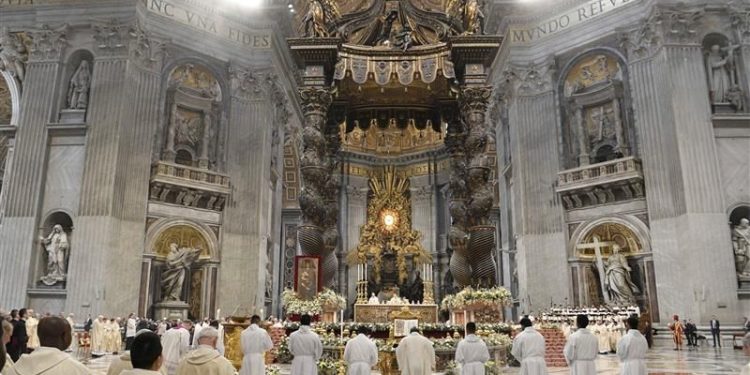“The basilica welcomes up to 50,000 people every day,” he said. “Considerable microclimatic variations during the day and strong changes in temperature and humidity between day and night interact with the canopy, causing alterations and corrosion of the metal; oxidation of the iron supports and reinforcements; and expansion of the wooden parts with consequent lifting and detachment of layers on its surface.”
Zander indicated that further study of the “microclimate of the basilica” will also help to form a conservation plan for all of the artistic works in the basilica.
The restoration work will begin on Feb. 12, one day after Pope Francis is scheduled to preside over the canonization of Argentina’s first saint in a Mass in St. Peter’s Basilica.
Alberto Capitanucci, who leads the technical team of “Fabric of St. Peter,” the office responsible for the conservation and maintenance of St. Peter’s Basilica, expects that it will take about four weeks to put up the scaffolding, which will enable a team of 10-12 experts to work each day on the restoration of the baldacchino.
The restoration in the basilica is one of many construction and restoration projects taking place across the city of Rome to prepare for the Church’s 2025 Jubilee Year.
Rome mayor Roberto Gualtieri has said that the Eternal City will become “an open-air construction site” in 2024 with 1,400 building projects planned in the city ahead of the jubilee, according to Italy’s Rai News.
Construction is already underway to create a new pedestrian-only wide walkway from Castel Sant’Angelo to the road leading to St. Peter’s Square, the via della Conciliazione, with a tunnel for cars underneath, a project expected to cost about $77 million.
The jubilee year will officially begin with the pope opening the Holy Door of St. Peter’s Basilica in December 2024.
Credit: Source link




